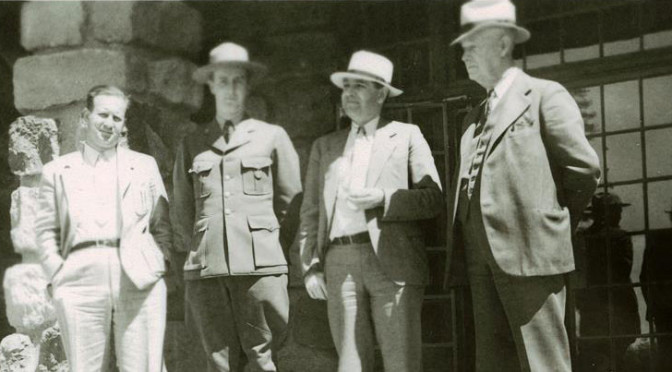That answers my question about why Oregon doesn’t have large areas like California does, as with parks such as Anza-Borrego.
Yes, we don’t have anything of that size. One of the places that might have been a possibility for large park would have been Steens Mountain in the southeastern part of the state. I made a study of that once for the Bureau of Land Management back in the 60’s. It would have been a logical state park. But the Highway Commission would have had to trade with the BLM to do it. Under the system we’re talking about, this would be a problem since the area is not near the highway system. If you look at the history of how the parks were developed in this state, you can see from the earliest time that the objective was to provide for scenic beauty in relation to the highway system.
Lawrence C. Merriam, Jr. Oral History Interview
So McKay was development-oriented?
Yes. He subsequently became Secretary of the Interior in 1953. Of course, I think the big thing there was to get people to spend the night in Oregon. The argument was that they would drive from California to Washington without stopping because they couldn’t here. We had some wonderful areas that we could develop, so we did. About 1953 I got into a series of differences with Armstrong, who was parks superintendent. This was particularly acute over the development at Oswald West State Park, and then called Short Sand Beach, about whether to put a road down at the beach. Actually it centered on a latrine that’s now covered by trees. As a result, I was told that either you go along with us, or we’ll get somebody else.
I had already been thinking about doing graduate work so that I could teach. My interests centered on forest recreation. So I stayed with the state, working as the forester for the Highway Commission until 1959. That meant that I worked with the parks on blow downs and this kind of thing. I also worked on the freeway system, on what is now I-5 and I-84. This was when they were relocating these routes and buying property that was forested. I would appraise the timber. There were a lot of blow downs and we had salvage sales. I stayed with that until going to the University of Montana as an assistant professor of forestry, having done graduate work at Oregon State on a night school basis. From Missoula I went to the University of Minnesota as professor of forestry in 1966. I again headed up a program in outdoor recreation, called recreation resource management. I stayed with that until I retired in 1986.


